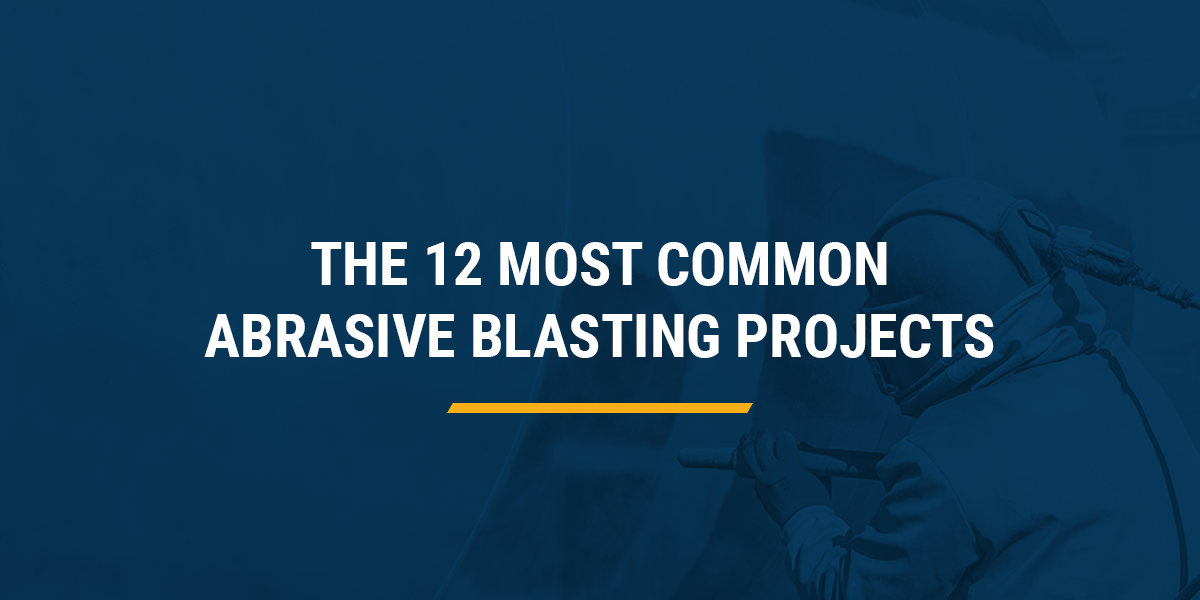Abrasive blasting is a powerful and versatile technique used to clean, prepare, and finish surfaces across a wide range of industries. Whether you're working on metal components, concrete structures, or even delicate materials like wood, abrasive blasting can help achieve the desired surface condition efficiently and effectively. This method involves propelling abrasive media at high speeds to remove contaminants, old coatings, rust, or other unwanted substances from a surface. The right type of blasting material and technique depends on the application, the material being treated, and the desired outcome. From industrial manufacturing to architectural restoration, abrasive blasting plays a crucial role in surface preparation and maintenance. Here are the 12 most common abrasive blasting projects that you might encounter in both commercial and industrial settings. Understanding these applications can help you choose the best approach for your specific needs, whether you're looking to improve adhesion, enhance aesthetics, or extend the life of equipment. Contact Us Before applying paint, especially to steel surfaces, it's essential to ensure the surface is clean and free of debris. Abrasive blasting removes dirt, rust, and old coatings, creating a smooth and uniform surface for better paint adhesion. This step is critical in preventing premature peeling and ensuring a longer-lasting finish. In the food service industry, maintaining hygiene is a top priority. Abrasive blasting is often used to clean stainless steel equipment and baking tools without damaging the surface. Natural abrasives like dry ice are commonly used to avoid contamination and ensure safety around food products. Architectural elements such as beams, columns, and decorative pieces require precision and quality. Abrasive blasting helps prepare these surfaces for coatings, restoration, or refinishing. Using gentle media like glass beads ensures that the underlying structure remains intact while achieving a clean, professional look. Concrete, wood, and brick surfaces often need gentle cleaning and restoration. Techniques like soda blasting or dry ice blasting are ideal for removing stains, paint, or old finishes without damaging the base material. These methods are eco-friendly and effective for preserving the integrity of the surface. Warehouse environments can accumulate grime, grease, and residue over time. Dry and wet abrasive blasting techniques are perfect for deep cleaning structural elements like beams, joists, and machinery. Portable blasting systems make it easier to target specific areas and maintain a clean, safe workspace. Railroad cars are frequently exposed to various materials, which can leave behind residues. Abrasive blasting is a key part of railcar maintenance, helping to remove hazardous buildup and prepare the surface for repainting. This process ensures the car remains safe and functional for future shipments. Bridges, especially those made of concrete or steel, require regular cleaning and maintenance. Abrasive blasting is an efficient way to remove old coatings, rust, and contaminants, ensuring the structure remains strong and durable. It also helps prepare the surface for new protective coatings or decorative finishes. Abrasive blasting is often used before etching or powder coating. It prepares surfaces like glass or metal by removing imperfections and creating a smooth base. Materials like silicon carbide are ideal for heavy-duty applications, offering durability and effectiveness in polishing and lapping processes. Plastic injection molds can accumulate debris and hardened material after repeated use. Abrasive blasting is a gentle yet effective method for cleaning these molds without causing damage. It helps maintain the mold’s performance and extends its lifespan, making it a valuable tool in the plastics industry. Foundry sand is commonly used in sand-casting processes. Abrasive blasting helps clean and maintain these molds, improving visibility and reducing labor costs. Starblast Ultra is a popular choice for more demanding tasks like paint removal and heavy rust cleaning. Shot peening, a form of abrasive blasting, is used to improve the fatigue resistance of metal parts like bearings, shafts, and gears. This controlled process enhances the longevity of mechanical components, reducing wear and increasing their operational lifespan. Graffiti is a common issue in public spaces. Organic abrasives like corn cobs or walnut shells offer a safe and effective way to remove graffiti without damaging the underlying surface. These natural media are ideal for commercial use and help preserve the integrity of materials like concrete or brick. Abrasive blasting is a reliable and adaptable solution for surface preparation, cleaning, and finishing. Whether you're in manufacturing, construction, or maintenance, there's an abrasive blasting method suited for your needs. At Finishing Systems, we specialize in providing high-quality blasting solutions to businesses across the U.S. Contact us today to learn more about our services and find the right equipment for your project. Jiangsu Bailite Transmission Technology Co., Ltd , https://www.zsindustrialbelt.com
The 12 Most Common Abrasive Blasting Projects
May 09, 2023
1. Painting Preparation
2. Food Process Maintenance and Cleaning
3. Architectural Component Preparation
4. Concrete and Wooden Surface Restoration
5. Warehousing Cleaning
6. Railroad Car Maintenance
7. Bridge Maintenance
8. Component Surface Preparation and Etching
9. Plastic Injection Mold Cleaning
10. Casting Application Sanding
11. Bearings, Shafts and Gears Lifetime Improvement
12. Graffiti Removal
Contact Finishing Systems to Learn More